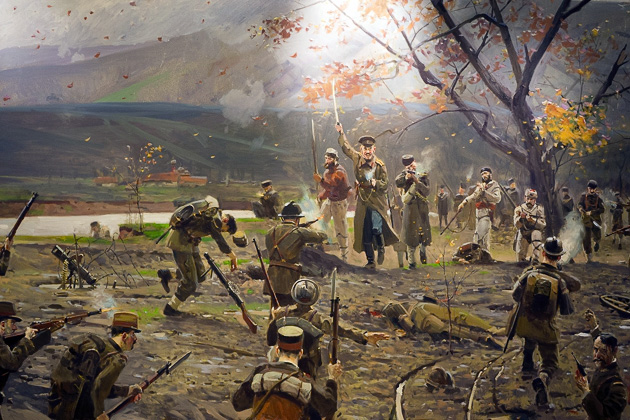A Concise History of Macedonia
The history of Macedonia is a tricky topic, and probably impossible to handle in a concise manner. This is a land whose borders have been as amorphous as time itself, whose people comprise manifold ethnicities, and whose very name is a source of controversy. Outlining this country’s history isn’t going to be easy, but we’ll give it a shot…

Prehistory – The first evidence of human activity in Macedonia dates back to the Neolithic Age, and the mysterious Vinča culture which occupied much of the Balkans between 5500 and 3500 BC.
500 BC – Most of the territory corresponding to the modern Republic of Macedonia is ruled by the Kingdom of Paeonia. A collection of tribes united around a single king, the Paeonians have their capital near the present-day city of Veles.
146 BC – The Romans arrive and establish the Province of Macedonia. After the great East-West Schism of 395 AD, rule of Macedonia passes to the Eastern Roman Empire (Byzantium).
6th Century AD – Nominally ruled by the Byzantine Empire, the lands of Macedonia see heavy settlement by Slavic tribes from the north.
972 – The Bulgarian Empire has risen across the Balkans, recording a string of resounding victories over the Byzantines. In 972, the capital of the burgeoning empire is moved to Skopje. Later, it will be relocated farther south to Ohrid.
1014 – After a devastating defeat to the Byzantines at the Battle of Kleidion, the surviving members of the Bulgarian army are blinded, and sent marching back to Ohrid with one eye per 100 men. Upon seeing the state of his men, the great King Samoil dies of a heart attack.
Medieval Period – Rule over Macedonian lands shifts frequently between the Byzantines, Bulgars and Serbs.
1392 – The Ottoman Empire arrives on the scene, ushering in 500 years of relative stability. Mosques are established throughout Macedonia, schools are opened, and large swaths of the population convert to Islam.
1893 – The Internal Macedonian Revolutionary Organization is established, and is one of the first groups to fight for the establishment of an independent Macedonian state. The IMRO wages guerrilla war against the Ottomans throughout the Balkans, culminating in the 1903 Ilinden Uprising.
1912 – The decline of the Ottoman Empire comes to a head during the First Balkan War, after which Macedonia is partitioned between Serbia, Bulgaria and Greece. Following the Second Balkan War, Bulgaria loses most of its share, and Serbia takes control of the territory which forms today’s Macedonia, eventually incorporating it into the Kingdom of Yugoslavia.
1944 – During World War II, Macedonia is occupied by Nazi-aligned Bulgaria, who exports the region’s Jewish population to death camps. After being liberated from fascist control, the People’s Republic of Macedonia is established as part of Tito’s Yugoslavia.
1991 – The people of Macedonia vote overwhelmingly to declare independence from Yugoslavia, with 95% approving the motion. The split is accomplished peacefully, sparing the new country the terror which accompanied Bosnia and Croatia’s struggles for independence.
2001 – Armed Albanian insurgents rise up in Western Macedonia, demanding greater rights and autonomy for a minority which comprises at least a quarter of the country’s population. Initial fighting is fierce, with nearly 200 combined dead. Hostilities end once NATO enters the fray, and the Ohrid Agreement is signed, promising greater ethnic rights to Albanians in return for disarmament.
2014 and Beyond – The Republic of Macedonia continues to struggle with economic stagnation, but is finally able to chart its own course. It has a newly-revitalized capital in Skopje, a rich multi-ethnic heritage, and gorgeous mountain scenery which is just starting to be discovered by tourists. Its past has been troubled, but its future is looking bright.




Pingback: After One Month in Macedonia | For 91 Days in Macedonia – Travel Blog
Pingback: Meet the Macedonians | For 91 Days in Macedonia – Travel Blog
I know you were trying to be concise, but you left out the fact that the Paeonians were invaders, as were the Thracians and the Illyrians, but Philip II fixed *them*, and then his son Alexander, called the Great, went on to rule most of the known world.That was concise, no?There is much discussion over what the world would look like today, had Alexander lived past 32. That’s because that small chunk of history (in total less than 50 years!) that I summarized had such heavy significance and impact. A pity you didn’t include it in your table….but then that’s what the comments are for, I suppose :P(enough bitching. I love this site, truly. Well done, and happy travels)